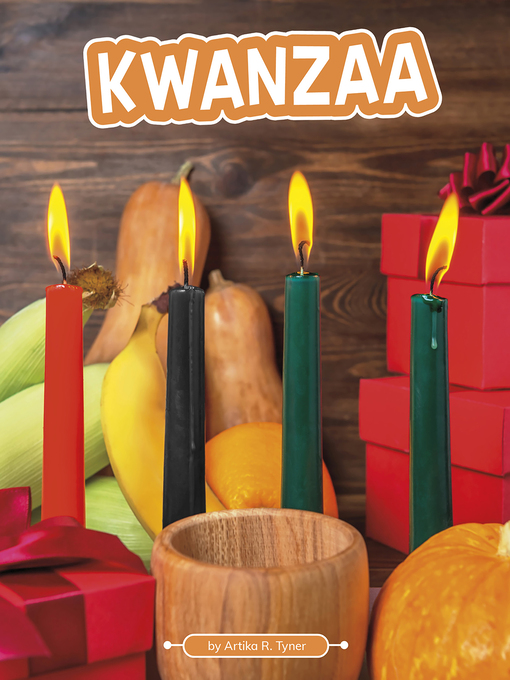WHAT IS KWANZAA? –
Kendra lights a black candle. It is the first day of Kwanzaa. Kendra’s father will read them a book about Marcus Garvey. He was a leader who helped bring together African people around the world.
Kwanzaa celebrates African culture. African Americans learn about Africa and their heritage. The holiday starts on December 26 and ends on January 1.
WHAT KWANZAA MEANS –
Kwanzaa means “first” in the East African language of Swahili. It is a celebration of the first fruit of the harvest. This is when people gather crops from the land. Some of the crops are cassava, yams, and beans. Cassava is a root vegetable used in many African dishes.
African harvest festivals are a tradition. Sometimes the weather was bad and crops did not grow. Other times African farmers grew plenty of food. They would celebrate the harvest with food, family, and friends.
HISTORY OF KWANZAA –
Dr. Maulana Karenga started the Kwanzaa holiday in 1966. He wanted to bring the African American community together. It is a special time for African Americans to learn about their history.
Kwanzaa lasts seven days. The goal is to remember the meaning of community and where you come from. People celebrate and learn community values.
Each day, grown-ups teach children about a community value:
• Umoja (unity) means coming together as one people.
Kujichagulia (self-determination) means to be responsible for yourself.
• Ujima (collective responsibility) means working together.
Ujamaa (cooperative economics) means supporting local Black businesses.
• Nia (purpose) means remembering African and African American history.
• Kuumba (creativity) means to work to make the community beautiful.
• Imani (faith) means hope for the future.
On the first day of Kwanzaa, people talk about why unity (umoja) matters. A black candle is lit. On each of the next six days, a new value is taught. Another candle is lit.
People prepare for Kwanzaa by setting a special table. The kinara is placed on the table. The kinara holds seven candles. A black candle is in the middle. It is surrounded by three green and three red candles.
The black candle stands for African people everywhere. Green candles are the land and hope for the future. Red candles are for those who came before us. Each night of Kwanzaa, households light a candle together.
The kinara is placed on a woven mat. The mat is called a mkeka. It shows how the past connects to the present.
In honor of the harvest, a bowl of fruits and vegetables is placed on the table. Ears of corn are put on the table too. Each ear of corn stands for children. They are hope for the future. The unity cup is a way to show that a family stands together as one.
Children decorate their homes. They hang African art and crafts on the walls. People might bring out their favorite musical instruments. These include the djembe (drum), kalimba (thumb piano), and caxixi (shaker).
KWANZAA AT SCHOOL –
Many students learn about holiday celebrations at school. Children explore the cultures of the world. Learning about Kwanzaa connects children to the continent of Africa.
Children can learn about Kwanzaa at school through:
• Reading stories about African history and culture
• Listening to a community member speak about African culture
• Drawing or crafting a kinara or a mkeka
• Watching a video about Kwanzaa
• Learning words in Swahili
Comprehension Questions
1. Who is Marcus Garvey?
A. A leader who helped bring together African people around the world
B. The person who started the Kwanzaa holiday
C. The first person ever to celebrate Kwanzaa
A. To encourage more healthy food choices
B. To honor the harvest season
C. The colorful food symbolizes energy and happiness
Your Thoughts
Vocabulary
4. List any vocabulary words below.

